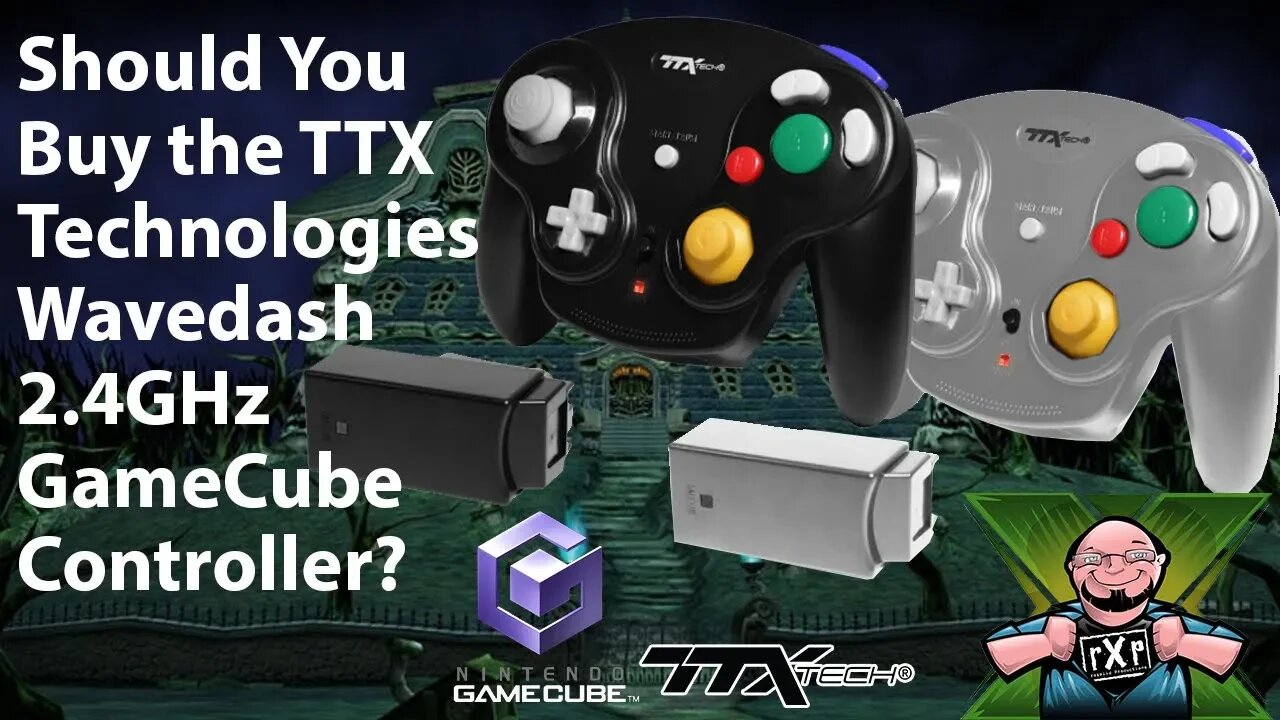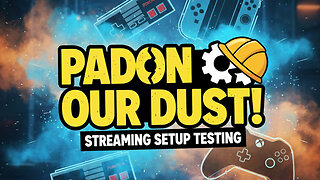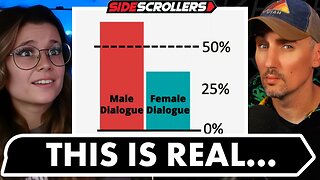Premium Only Content

Should You Buy the TTX Tech WaveDash 2.4GHz Wireless Controller for the Nintendo GameCube
In this video, we unbox and test out the TTX Tech WaveDash Wireless controller for the Nintendo Gamecube.
One thing Nintendo knows is controllers. When you look at other console manufacturers, especially in more recent generations, the controller from generation to generation look pretty much the same. The Xbox S controller looks like the 360's and the One S/X controller. The Dual Shock looks like the Dual Shock 2, 3, and 4. Nintendo, however, constantly innovates and changes controllers from one generation to the next. Perhaps one of the best controllers they ever came out with was for the Gamecube, and later the first OEM wireless controller, the Wavebird.
While the Wavebird was revolutionary for its time, they have become a bit pricey on the secondary market in recent years. There are also issues where you may be able to find a controller but it is missing the receiver. The folks at TTX Tech look to bring the experience of the original Wavebird back with their Wavedash controller.
If you were to close your eyes and hold the Wavedash, you'd be hard-pressed to tell the difference between it and the genuine controller; they did that good of a job recreating the original's ergonomics. The grips, button placement, sticks, everything just feels right. Even the battery door from the original fits the Wavedash and vice versa! Kudos to TTX for this attention to detail!
The WaveDash uses a 2.4GHz technology, where the original Wavebird used a 900Mhz band. That should mean that the Wavedash is a bit less susceptible to RF noise and interference than the original. 2-AA batteries provide power, and they last a fairly long time.
Upon my first testing with Mario Kart Double Dash, the Wavedash felt super responsive. The buttons all felt great, but I will say the control sticks felt a bit firm compared to my actual Wavebird. From there I went to try to play Rogue Squadron and something weird happened. The Wavedash didn't work, like at all. I next tried Rebel Strike, & it was like the controller was stuck scrolling down. Ok, this was weird. From here I tossed in Jedi Outcast, no issue. When paired to my Retro Fighters Warrior Wireless adapter, I also had zero issues. I don't know why those two games had issues, but I've had other 3rd party controllers that have had the exact issue.
Why it RoX:
- Feels identical to the original Wavebird
- Budget-Friendly
- Excellent responsiveness
- Good battery life
- Works with Warrior and GBros adaptors for the Switch
- Buttons and D-Pad feel as good as OEM
- 2 color options
What could be improved?
- Analog sticks felt a little too firm for my tastes
- Compatibility issues with Rogue Squadron
- More color options would be nice
Should you buy one?
I love the Gamecube controller, and by extension, the Wavebird. As such, the TTX Wavedash does a great job duplicating the feel and experience of the original. Compared to my original Wavebird I did think the control sticks were a bit on the firm side, but some may find this more desirable than others. The compatibility issue with Rogue Squadron was weird, but I've seen this before in other 3rd party controllers. I passed the on to the folks at TTX, hopefully they can update this in the future. The Wavedash won't replace my Wavebird, however, if I need additional wireless Gamecube controllers for players 2-4, this should fit the bill nicely.
#Gamecube #TTXTech #WavebirdThe footage used in this review are used under the Fair
Use laws, referenced below:
https://www.law.cornell.edu/uscode/text/17/107
Notwithstanding the provisions of sections 106 and 106A, the fair use of a copyrighted work, including such use by reproduction in copies or phonorecords or by any other means specified by that section, for purposes such as criticism, comment, news reporting, teaching (including multiple copies for classroom use), scholarship, or research, is not an infringement of copyright. In determining whether the use made of a work in any particular case is a fair use the factors to be considered shall include—
(1) the purpose and character of the use, including whether such use is of a commercial nature or is for nonprofit educational purposes;
(2) the nature of the copyrighted work;
(3) the amount and substantiality of the portion used in relation to the copyrighted work as a whole; and
(4) the effect of the use upon the potential market for or value of the copyrighted work.
The fact that a work is unpublished shall not itself bar a finding of fair use if such finding is made upon consideration of all the above factors.
(Pub. L. 94–553, title I, § 101, Oct. 19, 1976, 90 Stat. 2546; Pub. L. 101–650, title VI, § 607, Dec. 1, 1990, 104 Stat. 5132; Pub. L. 102–492, Oct. 24, 1992, 106 Stat. 3145.)
-
 29:50
29:50
RoXolidProductions
1 month agoPardon Our Dust - Setting Up Restream on YouTube & Rumble
712 -
 1:21:16
1:21:16
The White House
8 hours agoVice President JD Vance Celebrates Thanksgiving with Servicemembers and Delivers Remarks
33.7K17 -
 59:49
59:49
The Quartering
5 hours agoMTG MELTDOWN On X, Hasan Piker Runs From Ben Shapiro & AI Nightmare!
112K47 -
 1:16:24
1:16:24
DeVory Darkins
6 hours agoDISTURBING: Eric Swalwell left DUMBFOUNDED after he gets confronted about trans athletes
95.6K58 -
 2:06:36
2:06:36
Side Scrollers Podcast
8 hours agoThis is the Dumbest Story We’ve Ever Covered… | Side Scrollers
51.2K10 -
 1:13:26
1:13:26
Steven Crowder
9 hours ago🔴 Jay Dyer on Hollywood, The Occult, and the Attack on the American Soul
276K209 -
 1:26:28
1:26:28
Sean Unpaved
7 hours agoNFL Thanksgiving Games Are Going To Be ELECTRIC! | UNPAVED
38.7K5 -
 29:07
29:07
The Rubin Report
9 hours agoAre Megyn Kelly & Erika Kirk Right About Our Political Divisions?
79.8K59 -
 27:09
27:09
VINCE
10 hours agoSaving America's Schools with Norton Rainey | Episode 177 - 11/26/25 VINCE
192K99 -
 2:03:57
2:03:57
Benny Johnson
9 hours agoFBI Director Kash Patel Makes January 6th Pipe Bomber Announcement: Massive Breakthrough, Stay Tuned
144K126